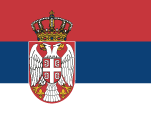
The LINK IT & EdTech international scientific conference – LINK IT & EdTech23 was held from May 26 to 27, in a hybrid format – live, on the 4th floor of the Belgrade Palace (5 Masarikova Street), and via live streams.
The Faculty of Contemporary Arts, the Information Technology School, and the Institute for Contemporary Education are the organizers of this conference, aimed at exploring the application of information technologies in education, with the exchange of knowledge and ideas among experts in the fields of education and information and communication technologies. Since, in addition to the part related to educational technologies, it also considers the application of information technologies in other economic and social spheres, the goal of this conference is the exchange of knowledge, opinions, and experiences of various scientific, academic, and professional individuals (dissemination of acquired knowledge).
The official opening of the conference took place on May 26. In the name of the Conference Scientific Committee, the Vice President of the Conference Scientific Committee, Prof. Dr. Dragan Ćalović, Dean of the Faculty of Contemporary Arts, greeted the attendees, followed by Maja Ivović, as a representative of the Institute for Contemporary Education and the President of the Conference Organizing Committee. The conference participants and guests were also greeted by the educational robot Pepper, a Teaching Assistant from the LINK edu Alliance system.
The conference received accreditation from the Institute for the Improvement of Education. Each participant with a submitted extended abstract and a complete paper who attended the conference received a certificate from the Institute and points for professional development (a form of professional development: conference), as well as a certificate of participation in the conference. The conference lasted for two days and carried 10 points of professional development, which was especially significant for K–12 system teachers.
After the ceremonial opening, Professor Ćalović led the plenary session, and during the first day of the conference, five additional sessions were organized. You can access the agenda of the first day of the conference via this link, while the second day was dedicated to the student symposium. You can see the agenda of the student symposium here.
The languages of the conference were Serbian, Croatian, Bosnian, Montenegrin, and English. The conference covered the following topics:
- Application of information technologies in various industries;
- Use of robots in education;
- Advantages and disadvantages of different operating systems;
- IT security: data and network protection;
- Development and programming of applications;
- Machine learning and artificial intelligence;
- Internet of Things (IoT) and use of smart devices;
- Blockchain and cryptocurrencies;
- IT career and competency development;
- Use of information technologies in education and teaching;
- IT innovations and their impact on society, economy, and education;
- Entrepreneurship in the field of information technologies;
- Digital multimedia;
- Big data;
- Software engineering;
- Digital marketing and media;
- Legal aspects and data protection;
- Application of artificial intelligence for process automation in educational institutions;
- Pedagogical aspects of robotics application in education;
- Application of EdTech tools in teaching humanities and arts subjects;
- Art and application of information technologies;
- Other topics relevant to the application of IT in education, the economy, and society.
A total of 92 authors from Serbia and other countries (15 foreigners) presented 49 papers at the plenary session and regular sessions, as well as 14 papers at the student symposium. The Scientific Committee consisted of prominent professors and researchers from nine countries – Serbia, Bosnia and Herzegovina, Ireland, Bulgaria, Romania, Portugal, North Africa, India, and Azerbaijan.
All papers will be published in the Book of Extended Abstracts, Book of Proceedings (in preparation), and Book of Abstracts from the student symposium (in preparation).
You can view the photo gallery here, as well as the impressions of the participants. The recording of the plenary session and working sessions can be viewed here.




